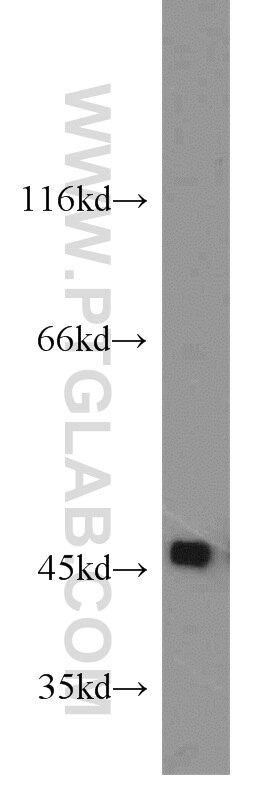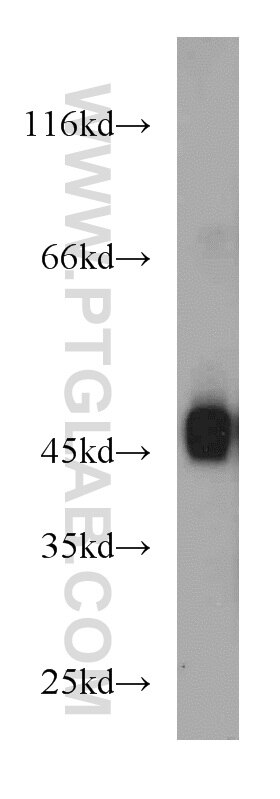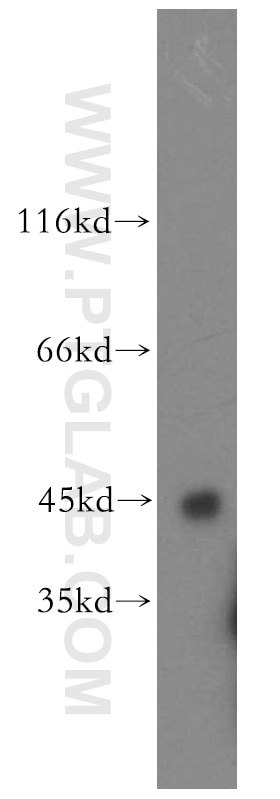Anticorps Polyclonal de lapin anti-SPAM1
SPAM1 Polyclonal Antibody for WB, ELISA
Hôte / Isotype
Lapin / IgG
Réactivité testée
Humain et plus (1)
Applications
WB, ELISA
Conjugaison
Non conjugué
N° de cat : 11208-1-AP
Synonymes
Galerie de données de validation
Applications testées
| Résultats positifs en WB | cellules PC-3, cellules MCF-7, tissu testiculaire humain |
Dilution recommandée
| Application | Dilution |
|---|---|
| Western Blot (WB) | WB : 1:500-1:1000 |
| It is recommended that this reagent should be titrated in each testing system to obtain optimal results. | |
| Sample-dependent, check data in validation data gallery | |
Applications publiées
| WB | See 1 publications below |
Informations sur le produit
11208-1-AP cible SPAM1 dans les applications de WB, ELISA et montre une réactivité avec des échantillons Humain
| Réactivité | Humain |
| Réactivité citée | bovin |
| Hôte / Isotype | Lapin / IgG |
| Clonalité | Polyclonal |
| Type | Anticorps |
| Immunogène | SPAM1 Protéine recombinante Ag1682 |
| Nom complet | SPAM1 |
| Masse moléculaire calculée | 58 kDa |
| Poids moléculaire observé | 45-47 kDa |
| Numéro d’acquisition GenBank | BC026163 |
| Symbole du gène | SPAM1 |
| Identification du gène (NCBI) | 6677 |
| Conjugaison | Non conjugué |
| Forme | Liquide |
| Méthode de purification | Purification par affinité contre l'antigène |
| Tampon de stockage | PBS with 0.02% sodium azide and 50% glycerol |
| Conditions de stockage | Stocker à -20°C. Stable pendant un an après l'expédition. L'aliquotage n'est pas nécessaire pour le stockage à -20oC Les 20ul contiennent 0,1% de BSA. |
Informations générales
SPAM1(sperm adhesion molecule 1), also named as Hyal PH20, belongs to the glycosyl hydrolase 56 family. SPAM1 is a GPI-anchored enzyme present on both the sperm plasma membrane and acrosomal membrane. It is involved in sperm-egg adhesion.
Protocole
| Product Specific Protocols | |
|---|---|
| WB protocol for SPAM1 antibody 11208-1-AP | Download protocol |
| Standard Protocols | |
|---|---|
| Click here to view our Standard Protocols |




